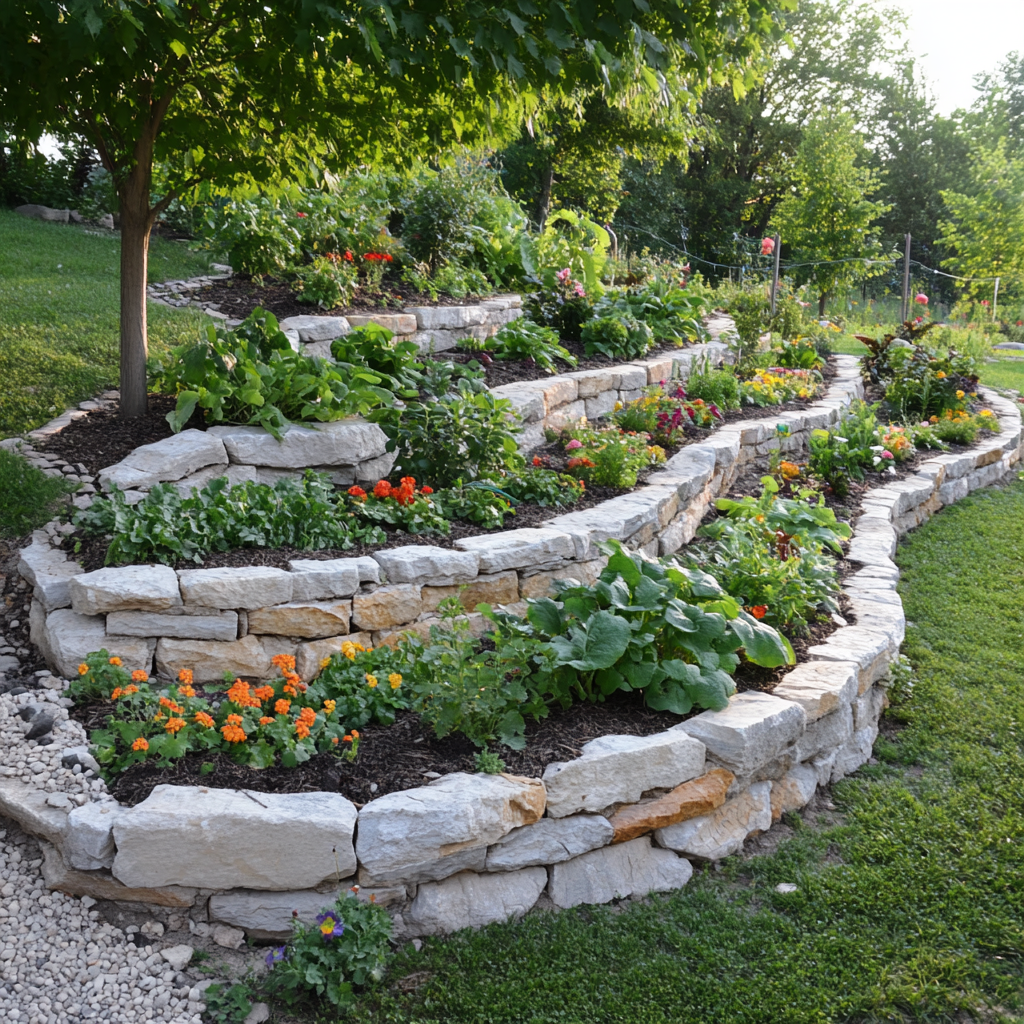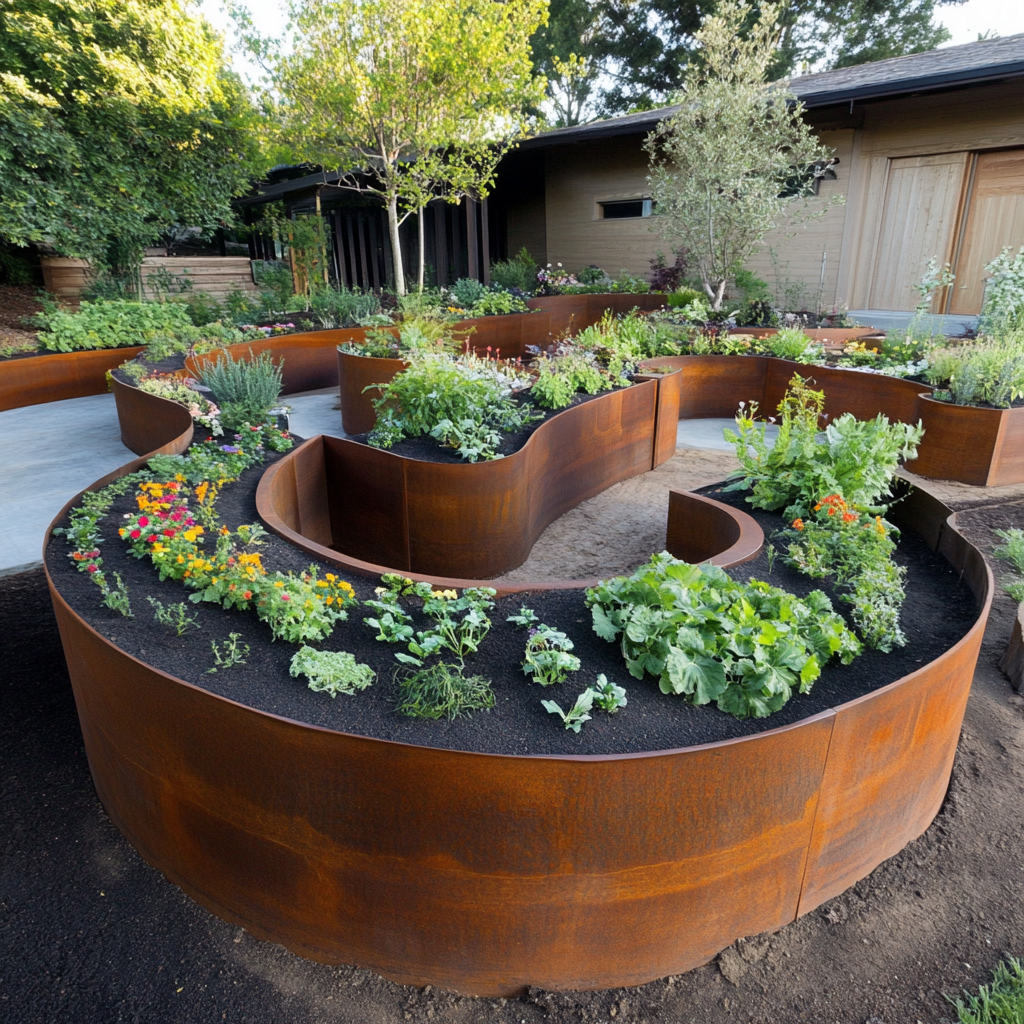Introduction
Raised bed gardening is a popular gardening technique that offers a variety of benefits for both novice and experienced gardeners. Whether you’re working with limited space, poor soil, or simply want to make gardening easier on your back, raised beds can be a game-changer. This method involves growing plants in a contained, elevated structure that can be filled with nutrient-rich soil, providing optimal growing conditions for a wide range of plants. In this guide, we’ll explore the key benefits of raised bed gardening and provide you with all the steps you need to get started on your own raised bed garden.
1. Improved Soil Quality
One of the main advantages of raised bed gardening is the ability to control the quality of the soil. Traditional gardening relies on the soil available in the ground, which may be rocky, clay-heavy, or lacking in essential nutrients. Raised beds, on the other hand, allow you to fill the bed with high-quality, nutrient-rich soil, ensuring your plants receive the best possible growing environment. You can choose a soil mix that is perfectly suited to the plants you want to grow, including amendments like compost, organic matter, or specialized fertilizers. This control over soil composition leads to healthier plants and higher yields.

2. Better Drainage
Good drainage is essential for plant health, and raised bed gardening offers superior drainage compared to traditional in-ground gardening. The elevated structure allows excess water to flow away from the roots, preventing waterlogging and root rot. This is particularly beneficial in areas with heavy clay soils or during periods of heavy rainfall. Additionally, raised beds allow you to incorporate different layers of materials that promote water retention at the root level, such as mulch, which helps to retain moisture while preventing soil erosion. Healthy drainage keeps the soil at the perfect moisture level for plant growth.

3. Easier Access and Reduced Strain
Raised bed gardening can reduce the physical strain of gardening, making it more accessible for gardeners of all ages and abilities. The elevated design means you don’t have to bend down as much, which can alleviate back and knee strain—especially for those with mobility issues. For people with arthritis or other conditions that make bending difficult, raised beds provide a comfortable and ergonomic solution. You can also build your raised beds at different heights to suit your needs. By creating raised beds that are waist-high or even higher, you can garden while standing, reducing the need to kneel or squat.

4. Extended Growing Season
Raised beds tend to warm up faster in the spring compared to in-ground gardens, allowing you to plant earlier and extend your growing season. The elevated soil in a raised bed is exposed to more sunlight, which helps it retain heat, giving your plants a jump-start when the weather is still cool. Additionally, the soil in raised beds tends to drain better, preventing the soil from staying too wet or cold, which can delay planting. As a result, you can enjoy earlier harvests and potentially even grow crops that wouldn’t survive in the cooler ground soil.

5. Reduced Weeds and Pest Problems
Weeds can be a major headache for gardeners, but raised bed gardening can significantly reduce the number of weeds in your garden. Since the soil is contained in the raised structure, weeds are less likely to invade from the surrounding ground. You can also line the bottom of your raised bed with landscaping fabric or mesh to prevent weeds from growing up through the soil. Raised beds also make it easier to use organic pest control methods, as you can more effectively manage pests with barriers or natural predators, such as ladybugs or beneficial nematodes. The contained nature of raised beds keeps pests like rabbits, squirrels, and slugs out.

6. Customizable Design
Raised bed gardens are highly customizable, allowing you to design your garden layout to fit your needs and space. You can build them in any shape or size—rectangular, square, circular, or even tiered—to make the most of your available area. This flexibility makes raised bed gardening ideal for small spaces like balconies, patios, or urban areas where traditional in-ground gardening may not be possible. You can also organize your raised beds to suit different types of plants. For example, you can create separate beds for vegetables, herbs, flowers, or even a dedicated bed for plants that require different soil conditions.

How to Get Started with Raised Bed Gardening
1. Choose the Location
The first step in creating a raised bed garden is selecting a suitable location. Look for a spot that receives at least 6 hours of direct sunlight per day, as most plants require plenty of sun to grow. Ensure the area is level and easily accessible so you can tend to your garden without difficulty. Avoid areas that are too close to large trees or shrubs, as their roots may compete with your plants for water and nutrients.

2. Decide on the Size and Materials
Raised beds can be made from a variety of materials, including wood, metal, stone, or plastic. Choose materials that are durable, aesthetically pleasing, and safe for your plants. For example, untreated cedar or redwood are natural options that resist rot and insects. The size of your raised bed depends on your available space, but a typical raised bed is about 4 feet wide and 8 feet long. This size allows you to easily reach the center of the bed from either side without stepping on the soil.

3. Prepare the Base
If you’re building a raised bed directly on the ground, clear the area of weeds and grass. You can lay down landscaping fabric or cardboard beneath the bed to further prevent weeds from growing up through the soil. Once the area is cleared, start constructing the bed’s frame using your chosen materials.

4. Fill with Soil
Once your frame is in place, fill the raised bed with a high-quality soil mix. A good starting point is a mixture of 50% topsoil, 30% compost, and 20% perlite or sand for good drainage. Ensure the soil is level and packed lightly, but not too tightly, so the plants’ roots can breathe.

5. Plant Your Garden
Now that your raised bed is ready, it’s time to plant! Choose plants that are suited to the growing conditions in your area and the specific needs of your raised bed. Space your plants according to their recommended spacing, and ensure they have enough room to grow. Water thoroughly after planting and continue to monitor your garden’s progress throughout the season.

Final Tips for Success in Raised Bed Gardening
✔ Watering – Raised beds can dry out faster than in-ground gardens, so make sure to water consistently and deeply, especially during hot weather.
✔ Mulch – Apply a layer of mulch on top of the soil to help retain moisture, suppress weeds, and maintain a stable temperature for your plants.
✔ Crop Rotation – Rotate crops in your raised beds each season to prevent nutrient depletion and reduce the risk of soil-borne diseases.
Conclusion
Raised bed gardening offers many benefits, from better soil quality and drainage to easier access and reduced strain. With the right location, materials, and care, you can create a beautiful and productive garden that maximizes space and makes gardening more enjoyable. Whether you’re a beginner or an experienced gardener, raised beds can help you grow a thriving garden with ease. So, start planning your raised bed garden today and experience all the rewards it has to offe